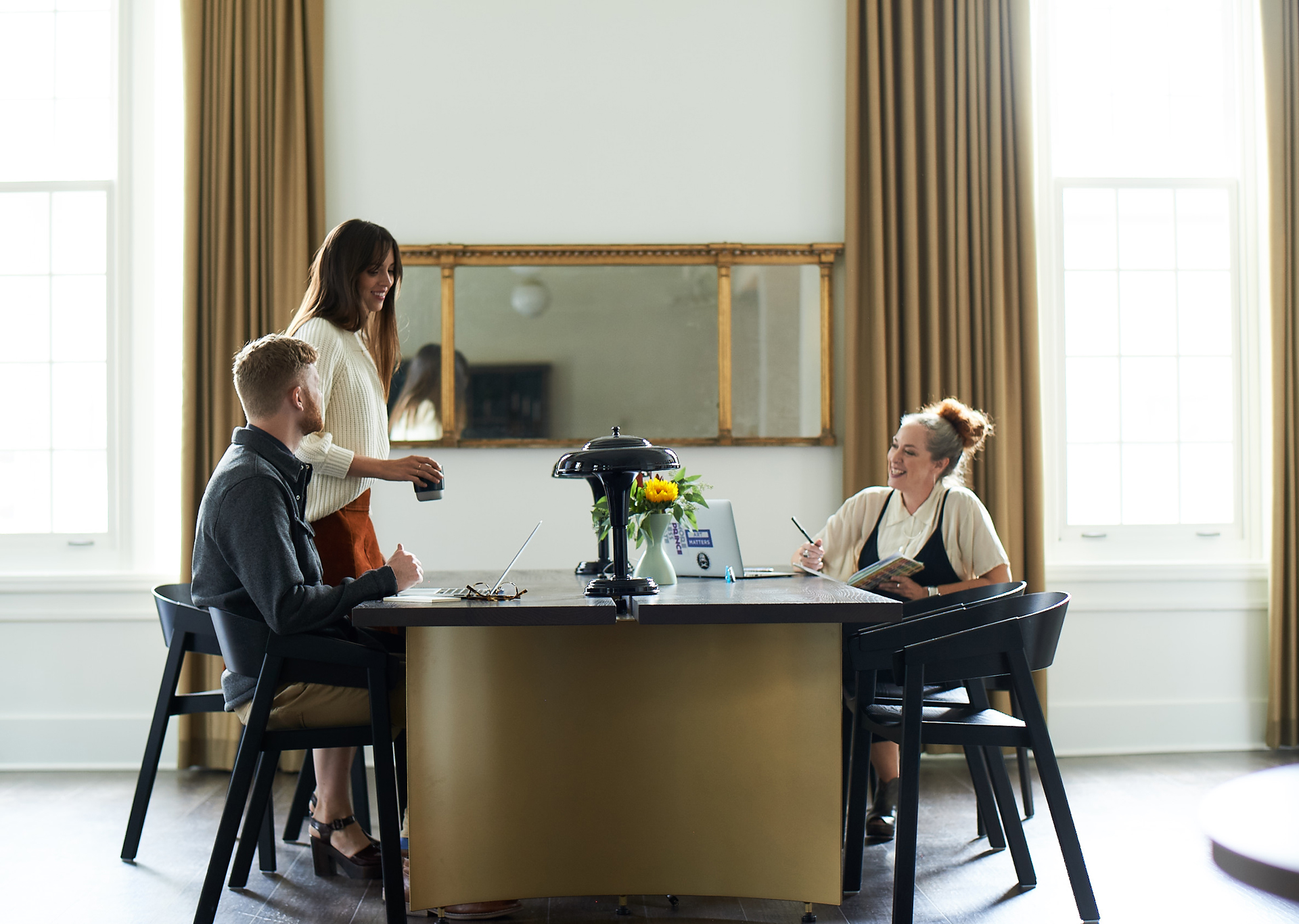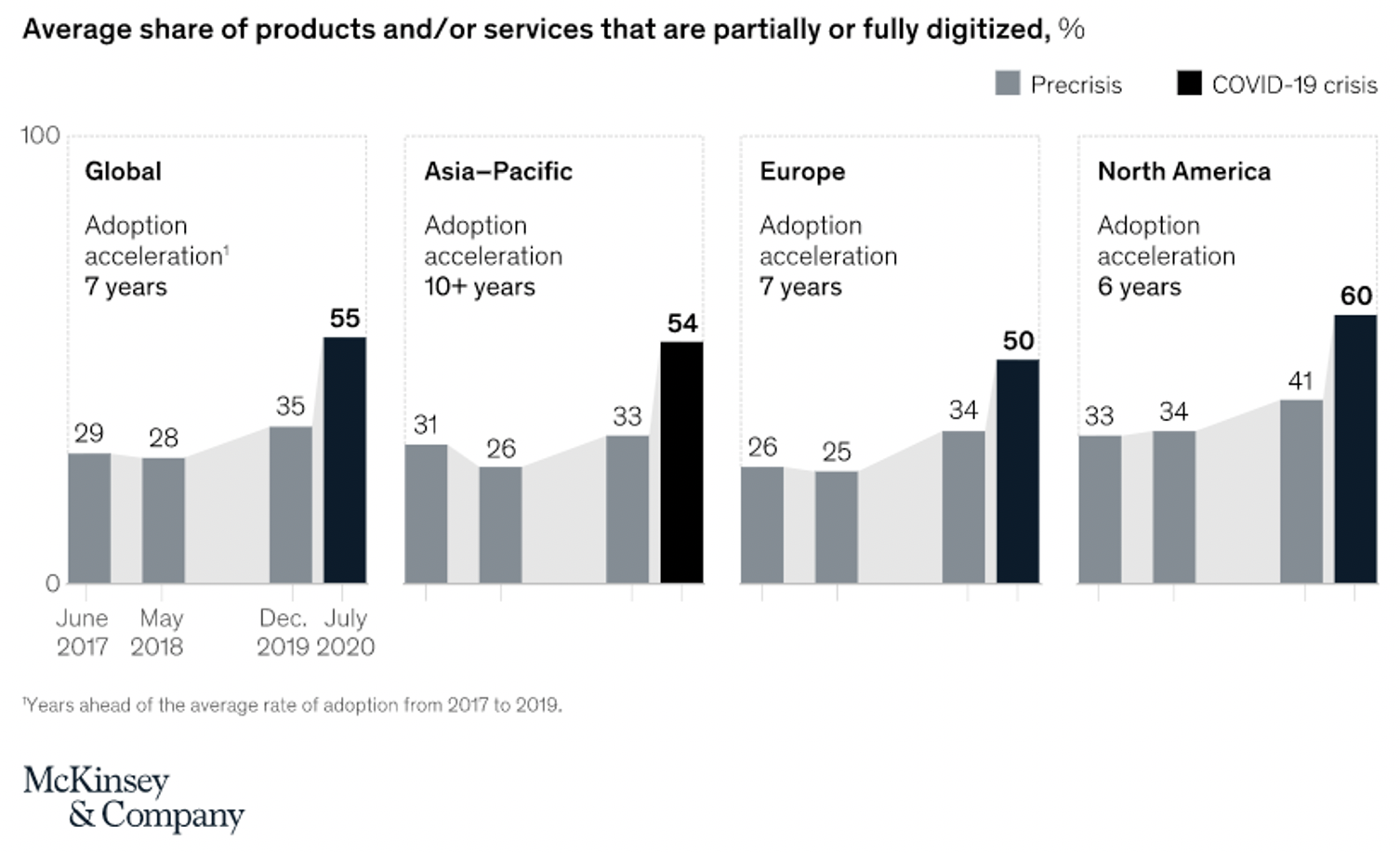
User-Centricity, Choice and Flexibility
In a survey conducted by Gensler of over 2,300 US knowledge workers in 2020, only 12% of people want to continue to work from home after the pandemic subsides. COVID-19 has shifted the way people think and feel about the workplace. Today’s tools have untethered us from our desks and allowed us to literally work from anywhere. Most offices have evolved from the “cubicle farms” and have incorporated a human-centric element to office design. To many, the office is a place of inspiration, socialization, and collaboration. The role of the workplace should be a launchpad to build community, foster creativity, and create bonds among peers.
It has been said before, “It’s not the office, it’s the commute.” The new workplace needs to be a destination, rather than the end of the line of waiting for the bus in the snow, dodging sneezes, and enduring a 15 MPH pace. In a survey conducted by HubbleHQ, 73.1% of employees would now like to work remotely at least once a week, compared to the 35.8% who did so before. There are multiple gains that come from not commuting such as saved time, money and increased flexibility, but according to Transport Focus, 3 in 10 workers do not feel safe on public transportation at the moment. With all the negativity surrounding the commute, dare I say that there are some benefits to commuting? To me, it is a way to demarcate our professional and personal lives, read a book, or to take a solid nap.
So how can society bring all of this back together? How can we keep the dynamic, fast paced and highly collaborative environment of the workplace humming post COVID-19?
Technology
Staying competitive in the new environment requires new strategies and practices. We saw companies like Zoom report a daily rise in meeting participants from 10 million in December 2019 to 300 million by March 2020. We see demand for smart buildings and space growing exponentially at a breakneck pace. The COVID-19 restrictions have accelerated demand for a digital solution to promote a safe yet still collaborative working environment. Many companies have already adopted common workplace technology such as meeting room booking or contactless entry, but what about everything else? Well, there are apps for that.
People value convenience and have become more comfortable with technology. Digital adoption has taken a monumental step forward at both the organizational and industry levels. More companies are adopting technology to bring people back together. Companies like spaceOS are helping fuel the contactless revolution and enabling employee’s phones to become the remote control for the entire office experience. You can book a desk and choose who you will sit next to, check air quality, lower the temperature, order food, book a yoga class or a parking space, or chat with a colleague.
According to a recent survey from McKinsey of 900 C-Level executives, the share of offerings that are digital in nature have risen by about 65% in the last 6 months!

Respondents of the same survey say that technology capabilities stand out as a key factor of success during the crisis. “Among the biggest differences between the successful companies and all others is talent, the use of cutting-edge technologies, and a range of other capabilities” (LaBerge, 2020)
If you ask any CEO “what keeps you up at night?” the answer will surely be attracting and retaining talent. Adopting intuitive and effective technology making work more convenient and productive, coupled with providing a safe work environment is one sure way to attract the best employees. “The organizations that experimented with new digital technologies during the crisis, and among those that invested more capital expenditures in digital technology than their peers did, executives are twice as likely to report outsize revenue growth than executives at other companies.” (LaBerge, 2020)
We know that humans will always be social. While we may never look forward to our commute, we can look forward to innovating at the office, and responding positively once again when we get home to the question, “how was your day, honey?”
By Greg Materdomini – Head of Sales, America
Contact: greg.materdomini at spaceos.io




